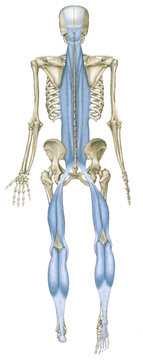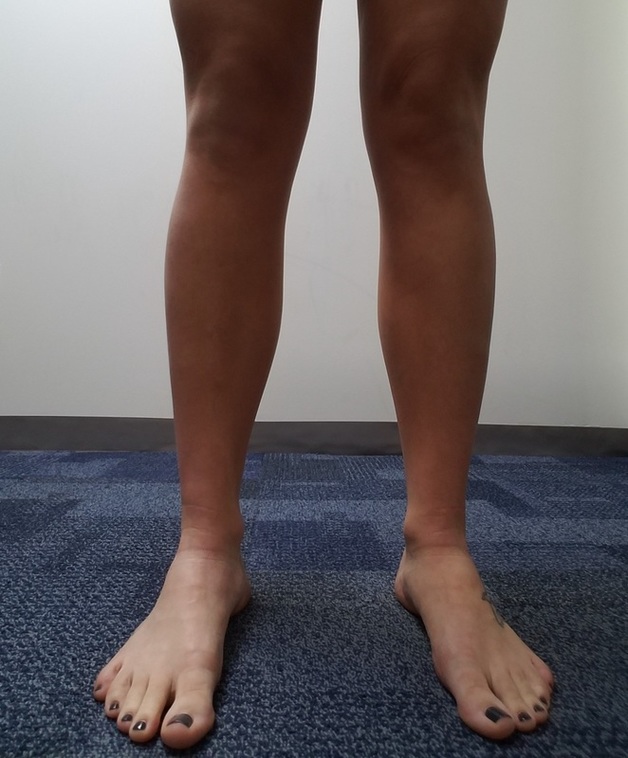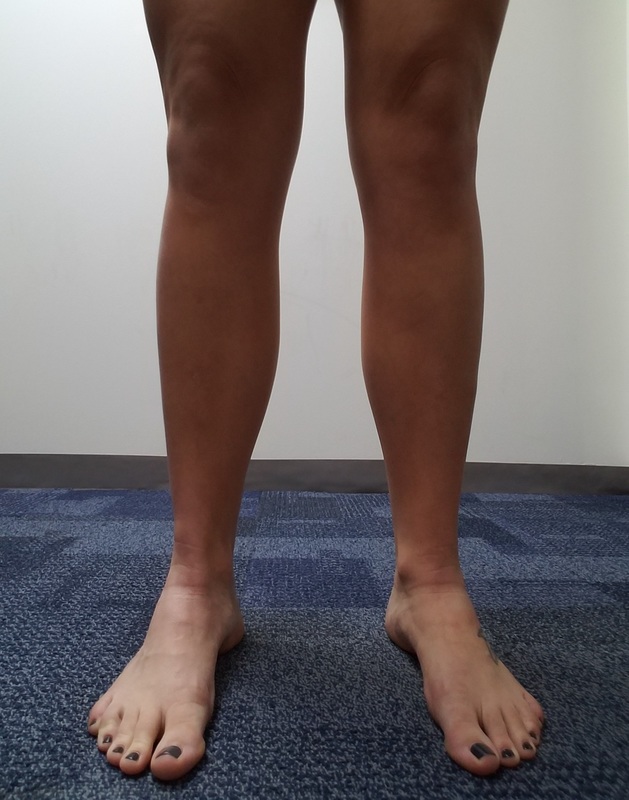Hip and Back Pain? Pelvic Floor Issues? Check Out Your Feet!
Nov 16, 2016Although your pelvic floor and your feet may seem as though they are different and non-related structures, this is not the case. The connections are fascial, neural and biomechanical. Your feet are your foundation; how they contact the ground dictates all movements at your ankle, knee and hip. Soft tissues and fascia in your feet have vast connections to the legs, hip and back. The feet and pelvic floor, despite the distance from each other, also share neural input!
Fascia
Fascia is the thin covering of your muscles that looks like a spider web. The posterior fascial line runs from the bottom of your feet, up the back of your legs and torso and to your head. Along the path, the fascia connects to the ischial tuberosities, or the “sit bones”. Muscles from your pelvic floor also attach here! So tension along this fascial line will directly impact your pelvic floor. Essentially, any joint the fascial line crosses and soft tissue in the area can be effected. A great place to start is the feet! Use a lacrosse ball to mobilize the fascia and tissues in the bottom on your foot and around the ankles. 
https://www.youtube.com/watch?v=EOJPKu7DUfU
Nerves
The nerves that are responsible for function around your pelvic floor—sphincters, PF muscles, deep hip rotators—are also responsible for the function of your intrinsic foot musculature. Signs of foot weakness may by indicative of pelvic floor weakness, and vice versa. So, strengthening the foot musculature and stimulating these nerves may help with pelvic floor function. Unfortunately, many athletes wear big, padded shoes which decreases the amount of work the foot musculature must do! Neglecting to walk around on bare feet is robbing your feet of their natural ability to stabilize and form to the surface but also decreases in amount of neural input.
We suggest barefoot walking and running to increase the input through your feet and begin to re-strengthen the small foot muscles. The best way is to find a grassy area, about 50-100m in length and run repeats barefooted. Your feet will be challenged much more than when running in squishy shoes, so ease in. You will also notice that your running form is probably different (better). Heel striking when barefoot in quite painful, so the body will automatically shift to more of a midfoot strike—which is good!
Biomechanics
The ankles drive the movement of the whole kinetic chain- the knee, hip and pelvis and spine. Dysfunction or pain in any of these areas can be stemming from faulty foot mechanics. For example, walking with the toes pointing outwards will cause your ankle joint to perform on a slightly different axis than it was designed. This will be demanding on the ankles and all the way up the kinetic chain.
The knee tends to be stuck in the middle and pushed around. The ankle dictates the movement of the lower leg and then influences the upper leg. The knee is just where these two units connect. So you will notice, we do not focus on biomechanics of the knee.
The hip has a direction connection with the pelvic floor. One of the deep hip rotators, the obturator internus, connects to the pelvic floor. With this connection, the amount of hip rotation will change (increase or decrease) the tension of the pelvic floor.
Putting it all together: Our feet control the movements of the joints above it. If your arch collapses (flat feet), the lower leg will rotate inward and the knee will follow. Up the chain, the thigh will also rotate inwardly which changes the tone of the pelvic floor. The angle of the knee will change with all of this, but remember it is not the driver of the dysfunctional motion, rather the passenger. Living with faulty biomechanics (however slight) can perpetuate back, hip and/or pain and dysfunction. Rather than starting with an MRI for the back or kegals for the pelvic floor, why not see if changing how you move can decrease symptoms?
A simple way to put this into practice is a slight change during a body weight squat. Move your feet to a comfortable squat position. Before sending your hips back and down for a squat, screw your feet into the floor. That is, acting as though you are moving your big toes further apart but your feet are not moving. Keep the toes on the ground! This creates torque at the hip. By engaging the external rotators, you are creating tone at the pelvic floor--remember the connection? You may also notice that the arch in your foot becomes more pronounced. Hello intrinsic foot musculature! This motion is also helpful for those with hip pain, especially pinching at the front.
In the photos below, my feet are not in a squat stance, but I am showing the subtle external rotation. You can see the largest differences at my knee caps and the direction they are facing. Also, notice my arches after the external rotation (bottom photo). They are higher! You can see a greater difference on my left foot. My whole foot stays in contact with the ground.


Recap: The foot and the pelvic floor have more connections than you may realize. They share fascial connections as well as neural. Taking the time to mobilize tight tissues and allow for more input with bare feet can have positive effects on hip, back and pelvic floor issues. The ankles largely drive the entire kinetic chain from the bottom up. So, taking care of the foundation of movement will be the most beneficial!
Thanks for reading,
Dr. Jackie, PT, DPT, OCS, CSCS
Let us help you figure out to live your best active life today!
Remember, Movement is Medicine!

